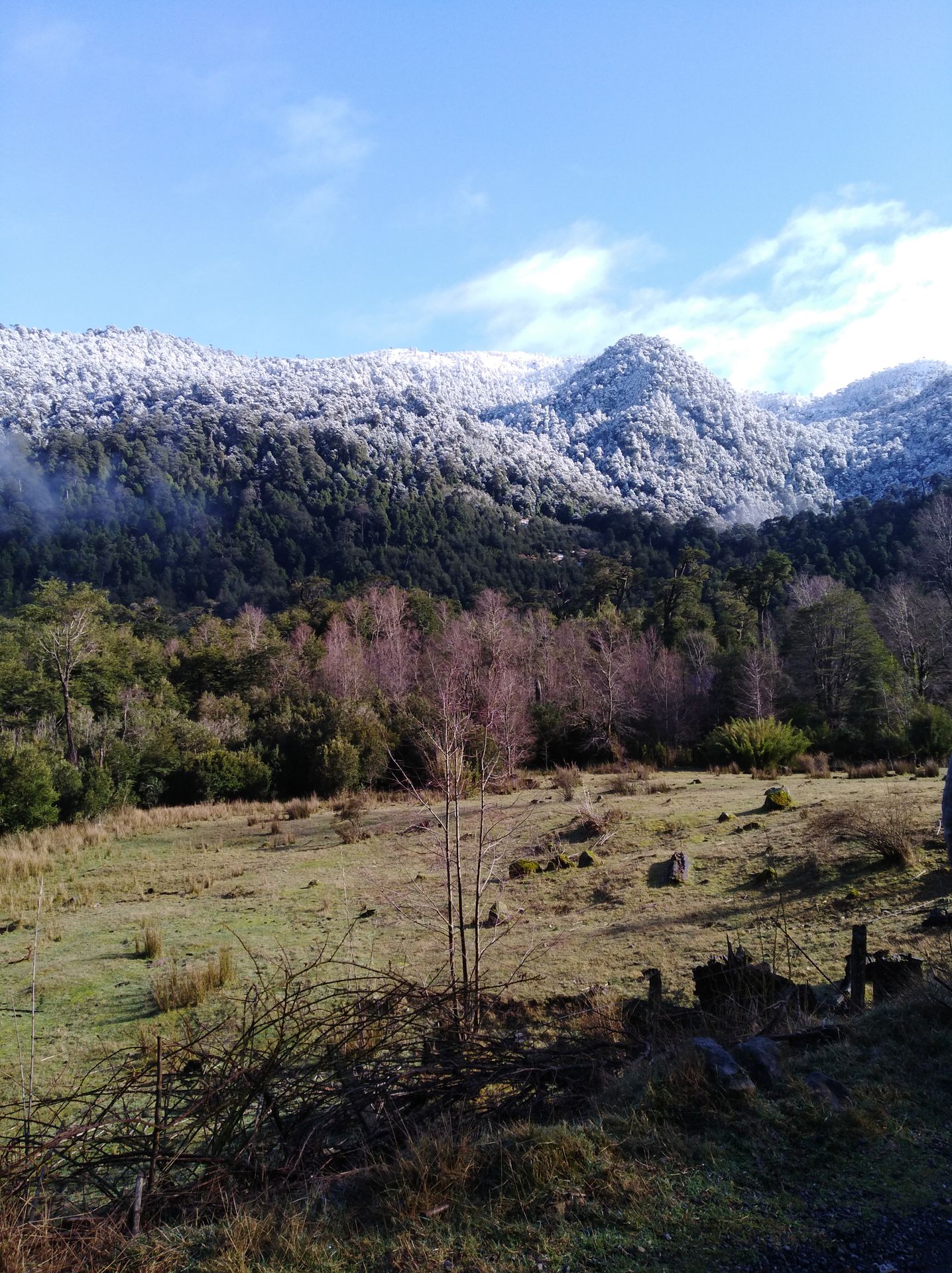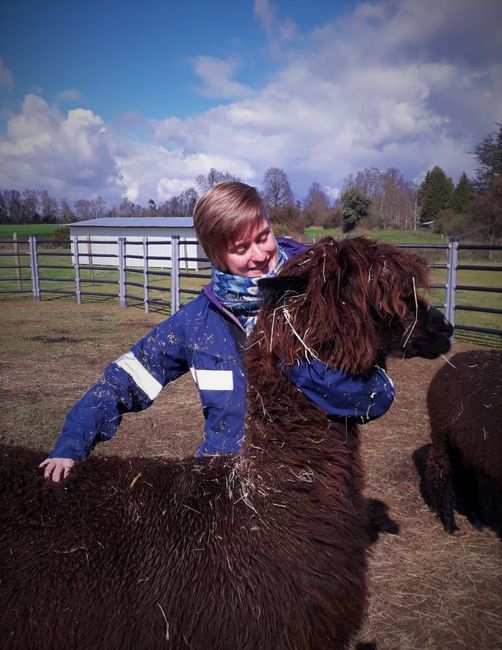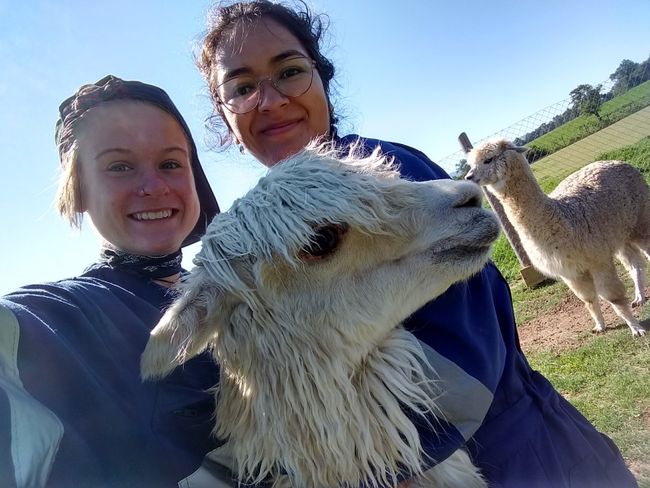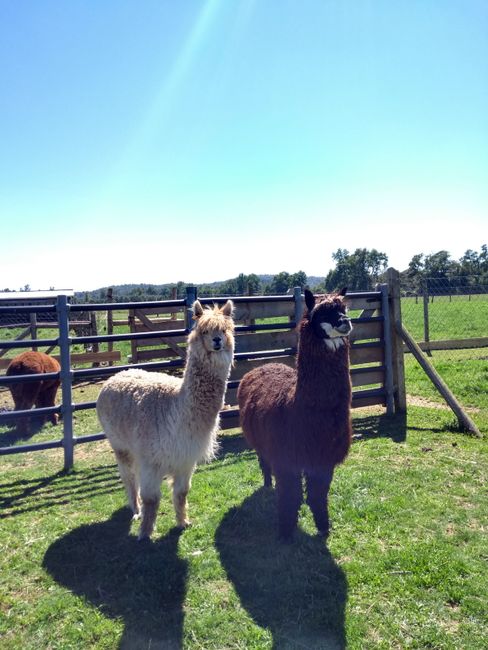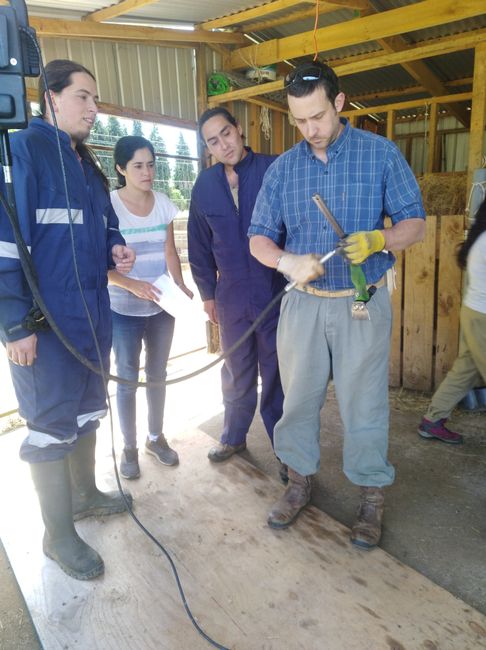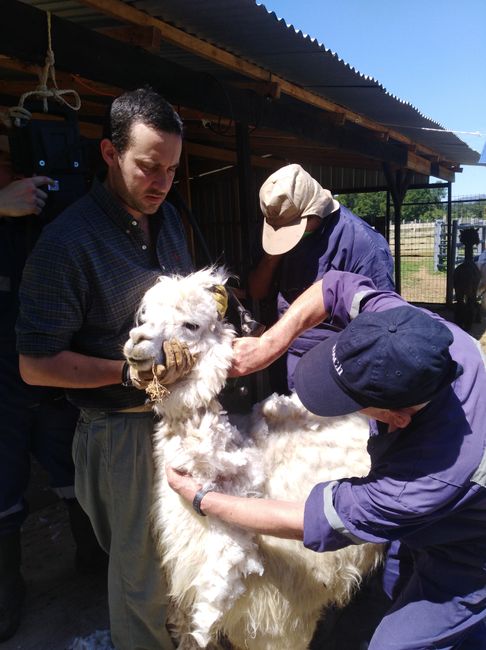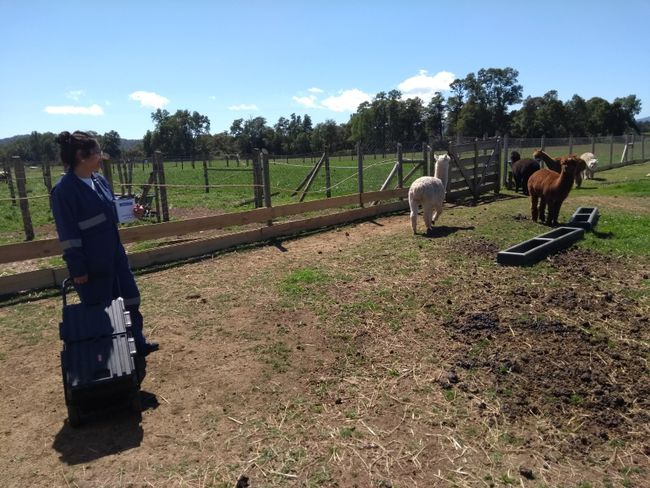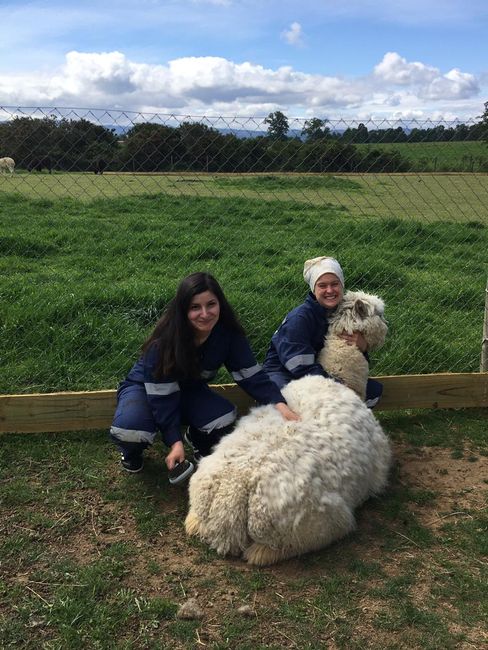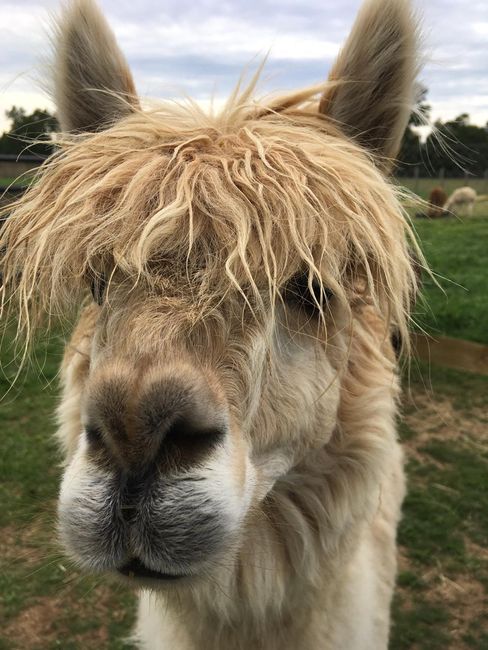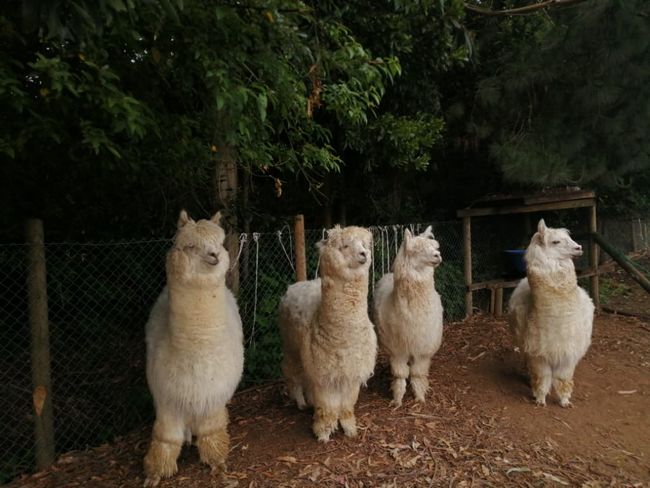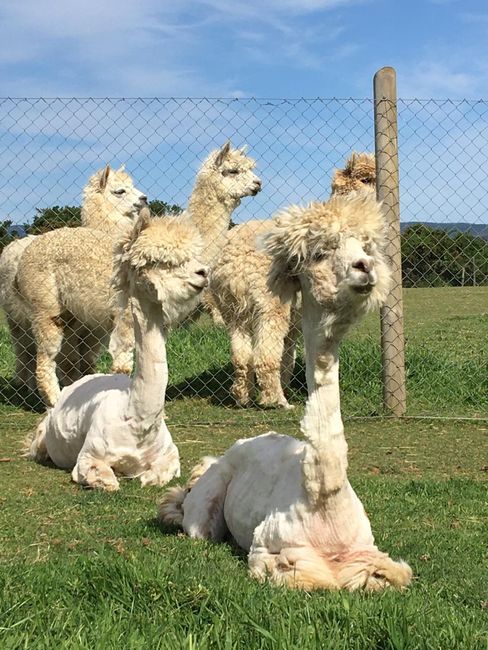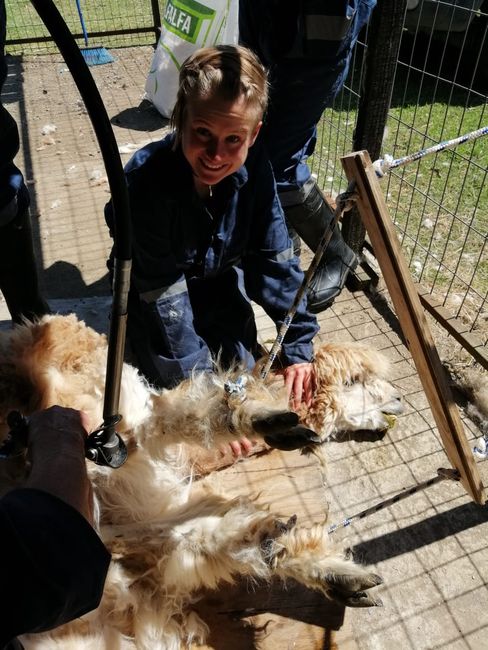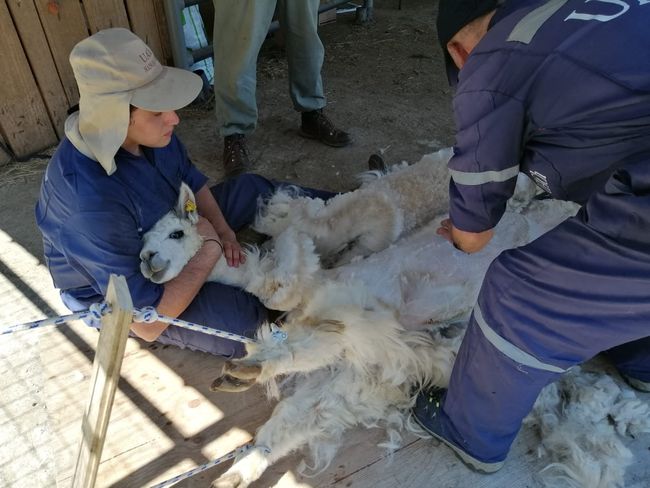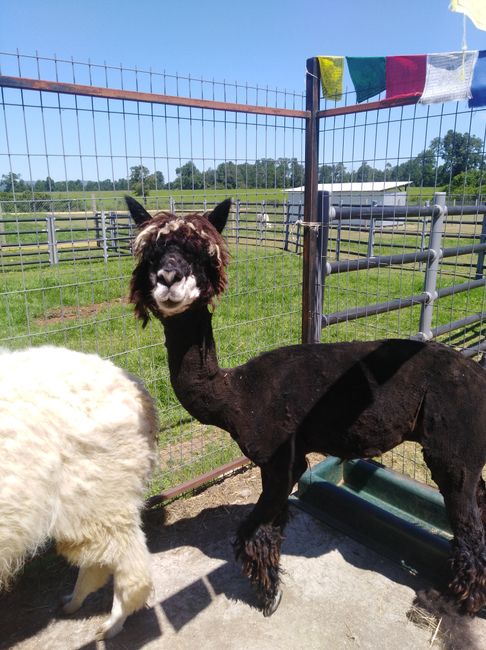Alpacas hugging for Science!
প্রকাশিত হয়েছে: 24.11.2019
নিউজলেটার সদস্যতা

(Hugging alpacas in the name of science)
The past two weeks in the laboratory have been all about our cute fluffy mascots. As the temperatures rise, some are already reaching 25 degrees. (Which feels like 35 degrees due to the high humidity here.) This means summer haircut for the llamas. Their fur grows very slowly, so it only needs to be shaved every 1-2 years. I am very happy that I was allowed to participate in this procedure.
In the first week, we went to the animals in dry weather to brush them. It is important that the fur is dry. They live outdoors and if the wool is not further cleaned for 1 year, all kinds of things accumulate in it. (Leaves, moss, a lot of dust) One person caught the alpaca and held it tightly around the neck. This keeps them calm and prevents them from turning their necks and spitting at us. The second person has a brush with wire bristles, just like the one my grandma's cat loves. (Greetings to Franzii) The procedure should not take longer than 10 minutes, as the alpaca would get too stressed and we have 30 alpacas to clean. This is where the different personalities of the animals are also revealed. Some kick, others spit, make plaintive sounds, or lie down in the meadow. Afterwards, the animals look very fluffy and well-groomed. Additionally, the weight of the animals was checked, because if they are too thin, they are not allowed to be sheared, as they would get cold. But most of our alpacas are in good shape.

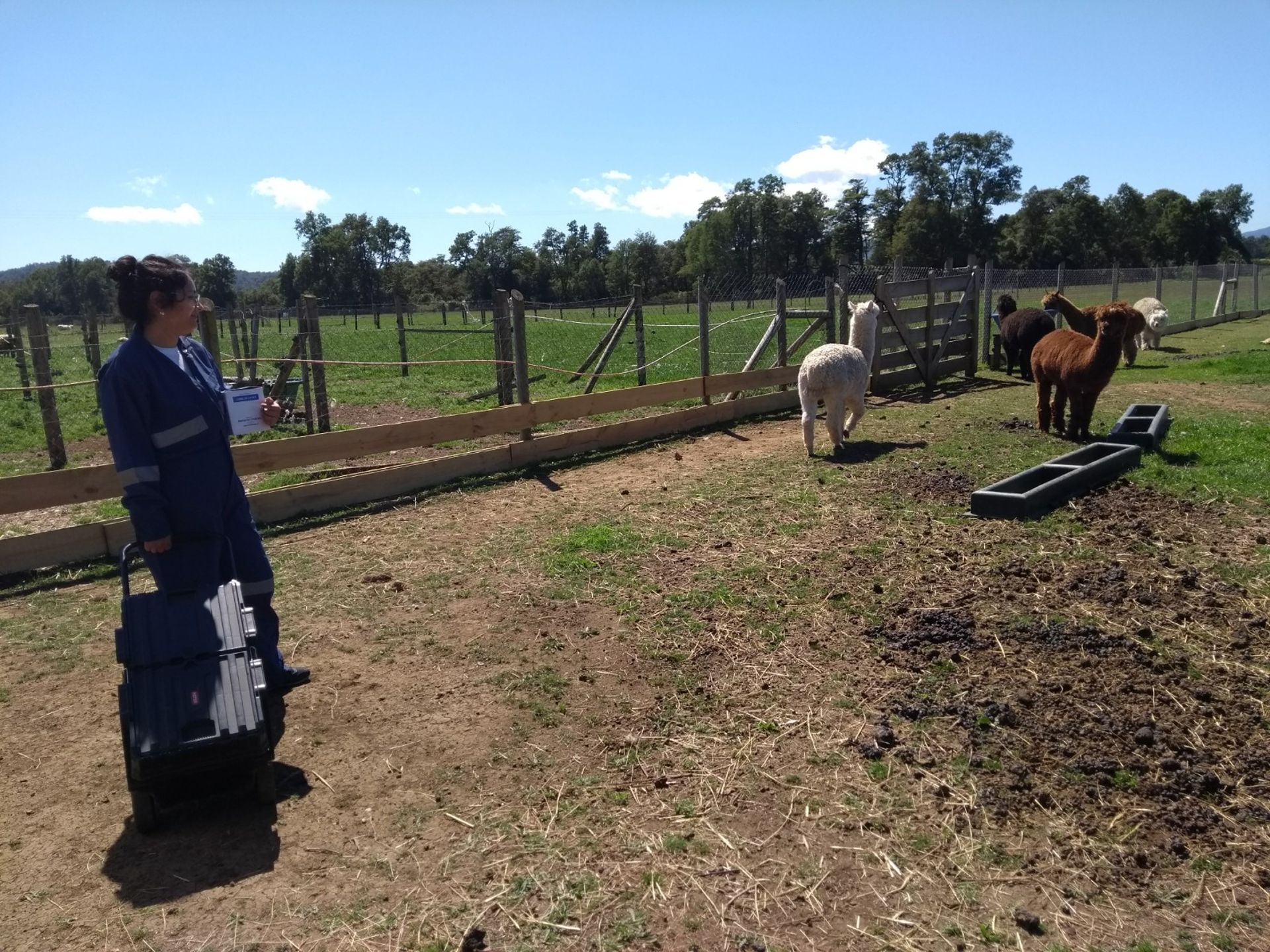
After brushing, we took a short cookie and yerba mate break and then removed weeds from the area that are harmful to the animals. It is sweaty work, but hey, a free workout.

In the second week, we unfortunately had some bad luck with the weather, so we didn't start shearing until Thursday. 3-4 veterinarians are responsible for the alpacas, and they were all present on those days. In addition, a person who usually takes care of the university's sheep and sheared them last week.
First, the clippers were assembled, which caused some problems with the operating instructions. You can imagine it almost like assembling a piece of furniture from Ikea.
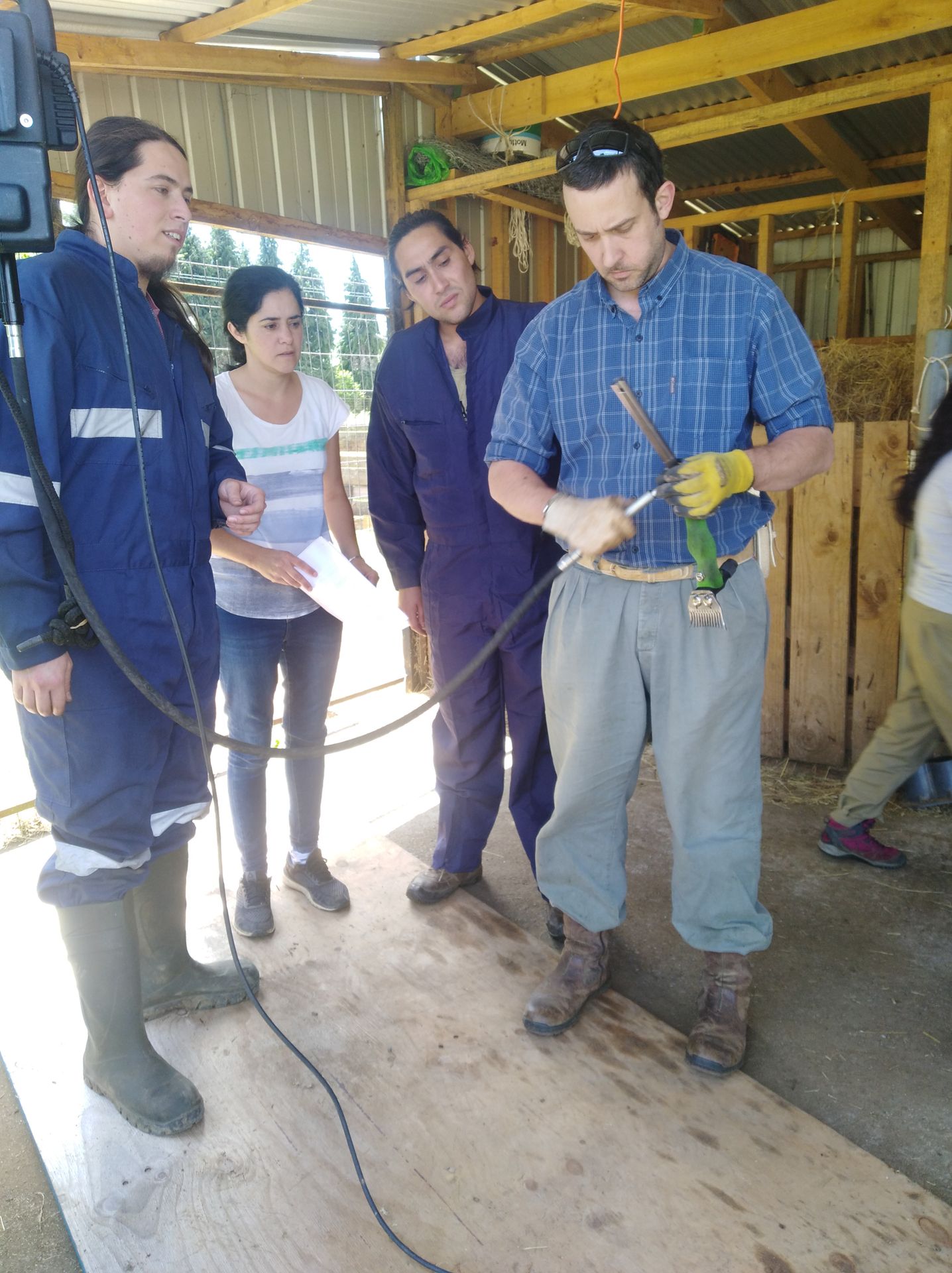
Afterwards, 2-3 alpacas were separated from the herd. This is important because alpacas are herd animals and should never be alone. One of them was then caught and "pushed" towards the clippers. We trimmed the fur around its neck while it stood. The wool was then collected. Each of our alpacas has its own name and also received its own bag for the wool. This will be taken to a spinner and seamstress to be turned into scarves, ponchos, and blankets. These will be sold or given as promotional gifts for collaborations. I hope to get a scarf as well, preferably "Viktor".


Once the neck was free of fur, the animal was laid on the ground. One person held the neck tightly. The feet were separated and pulled apart. It generally looks very brutal. It is not pleasant for the llama, but it significantly shortens the shearing time, which ultimately benefits the animal. This way, the toenails can also be trimmed at the same time. (Toe hooves or what do you call them?! ;D)

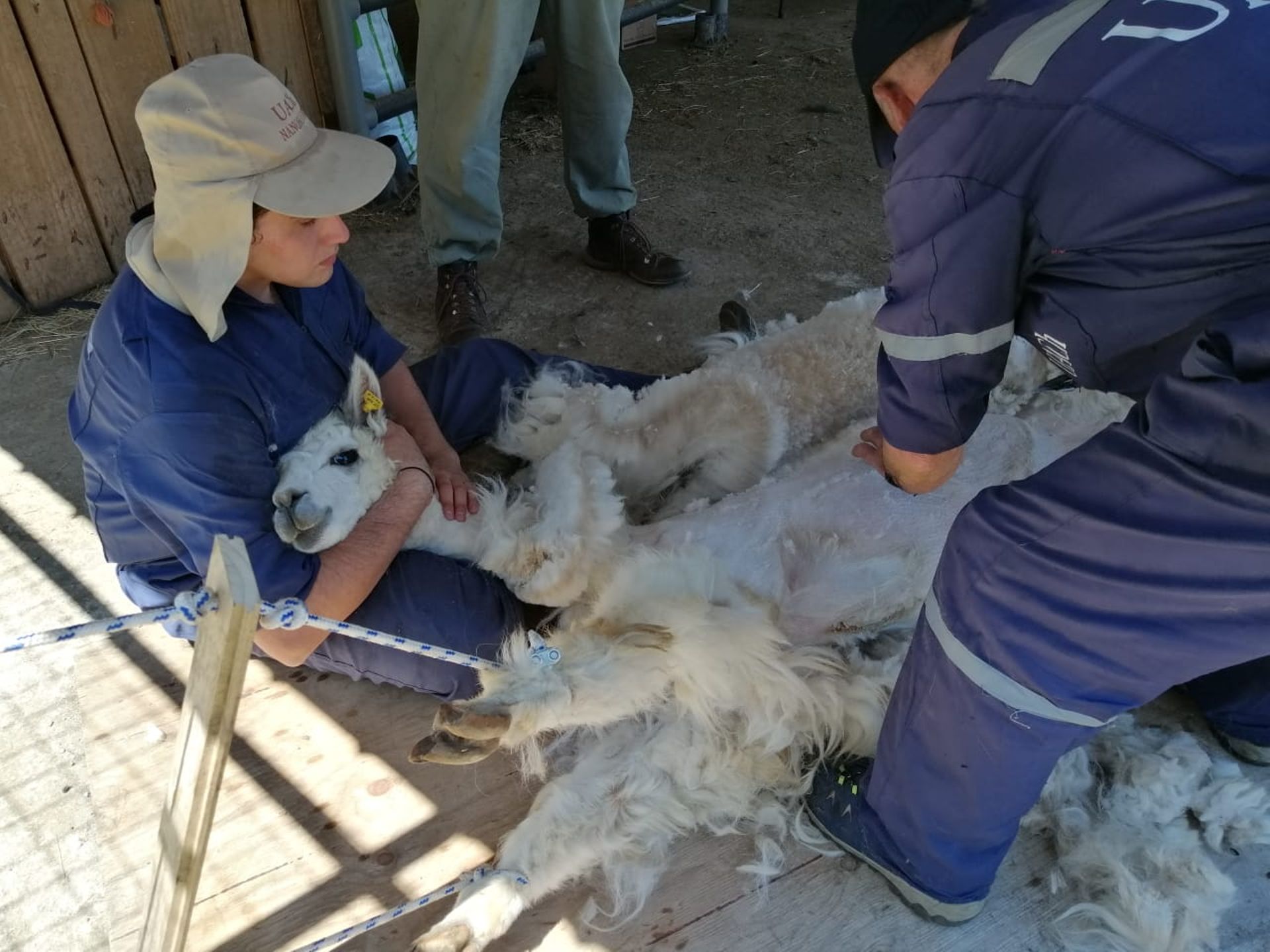
Afterward, the alpacas look like pretty ugly poodles in my opinion...
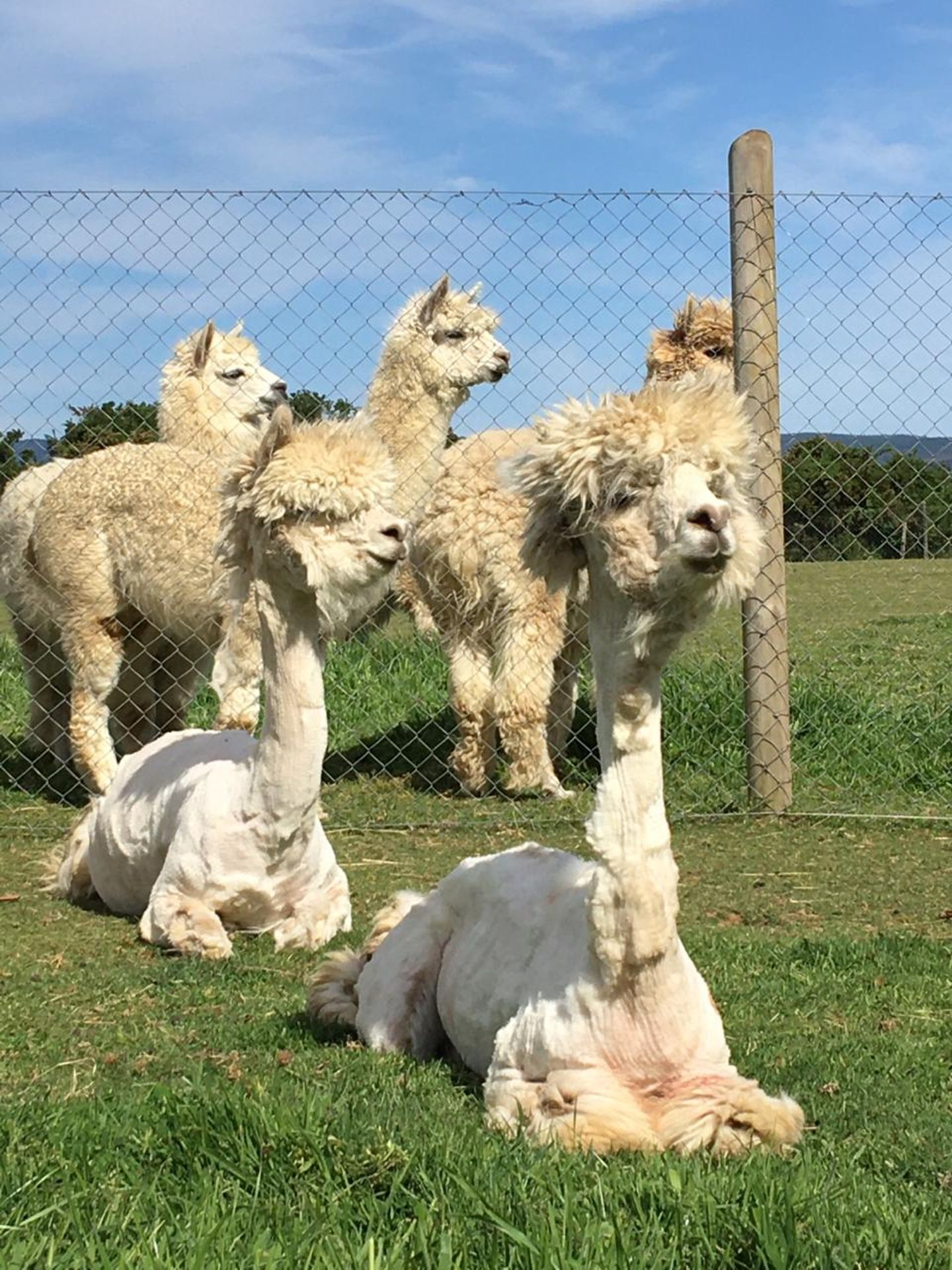
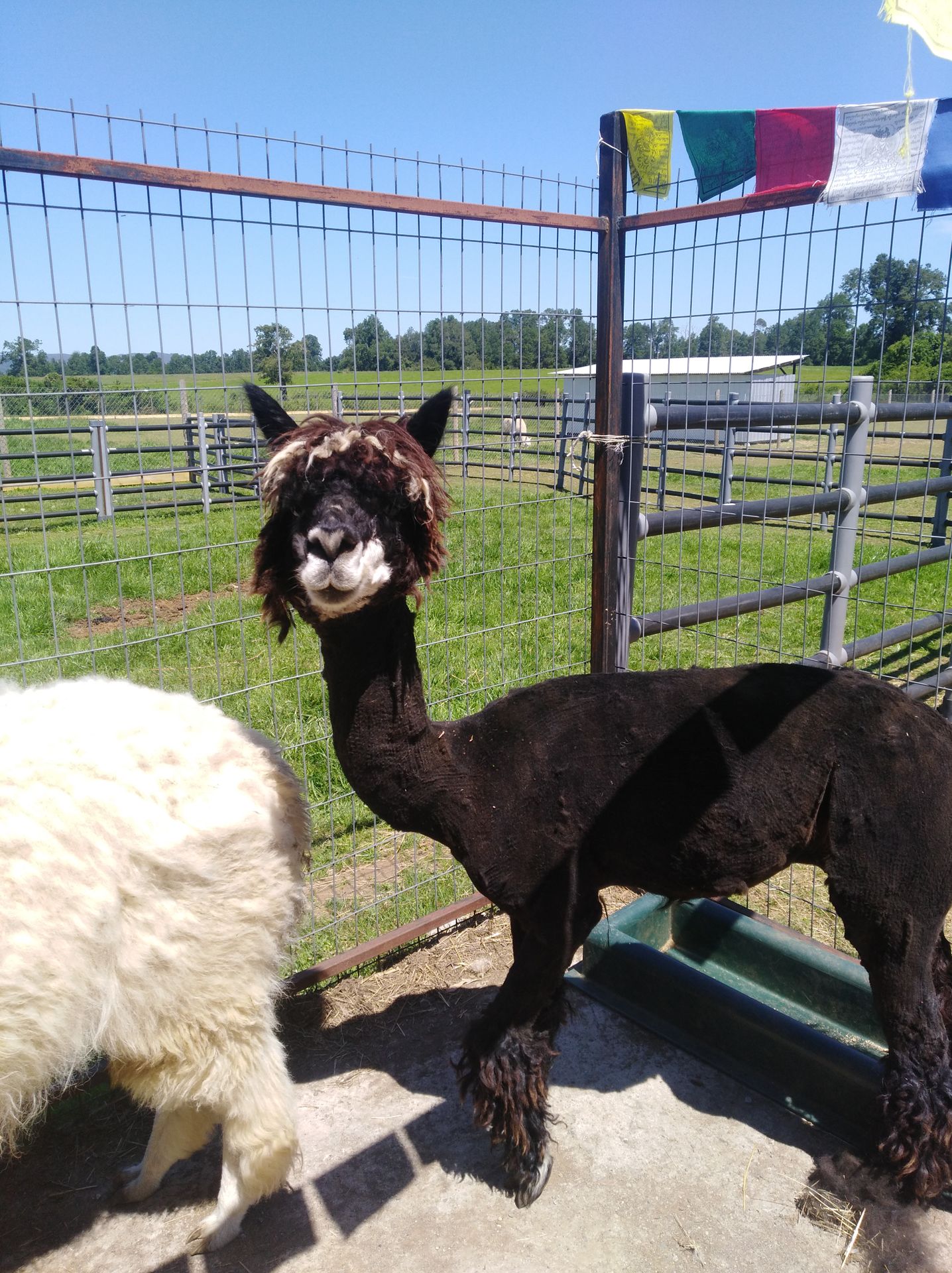
In any case, working with the animals was a lot of fun, it was a good balance to our everyday lab life, and I learned a lot.
Frieda (24.11)
নিউজলেটার সদস্যতা
উত্তর
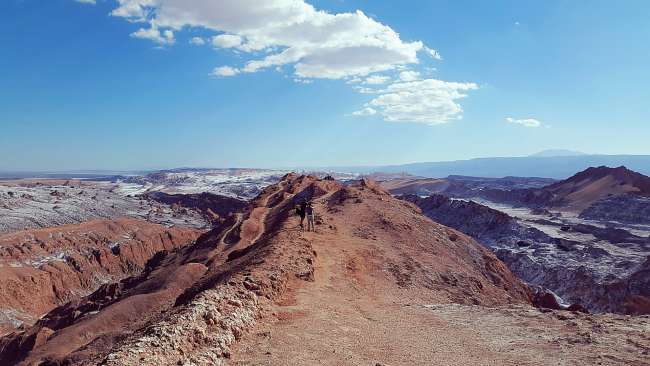
ভ্রমণ রিপোর্ট চিলি
